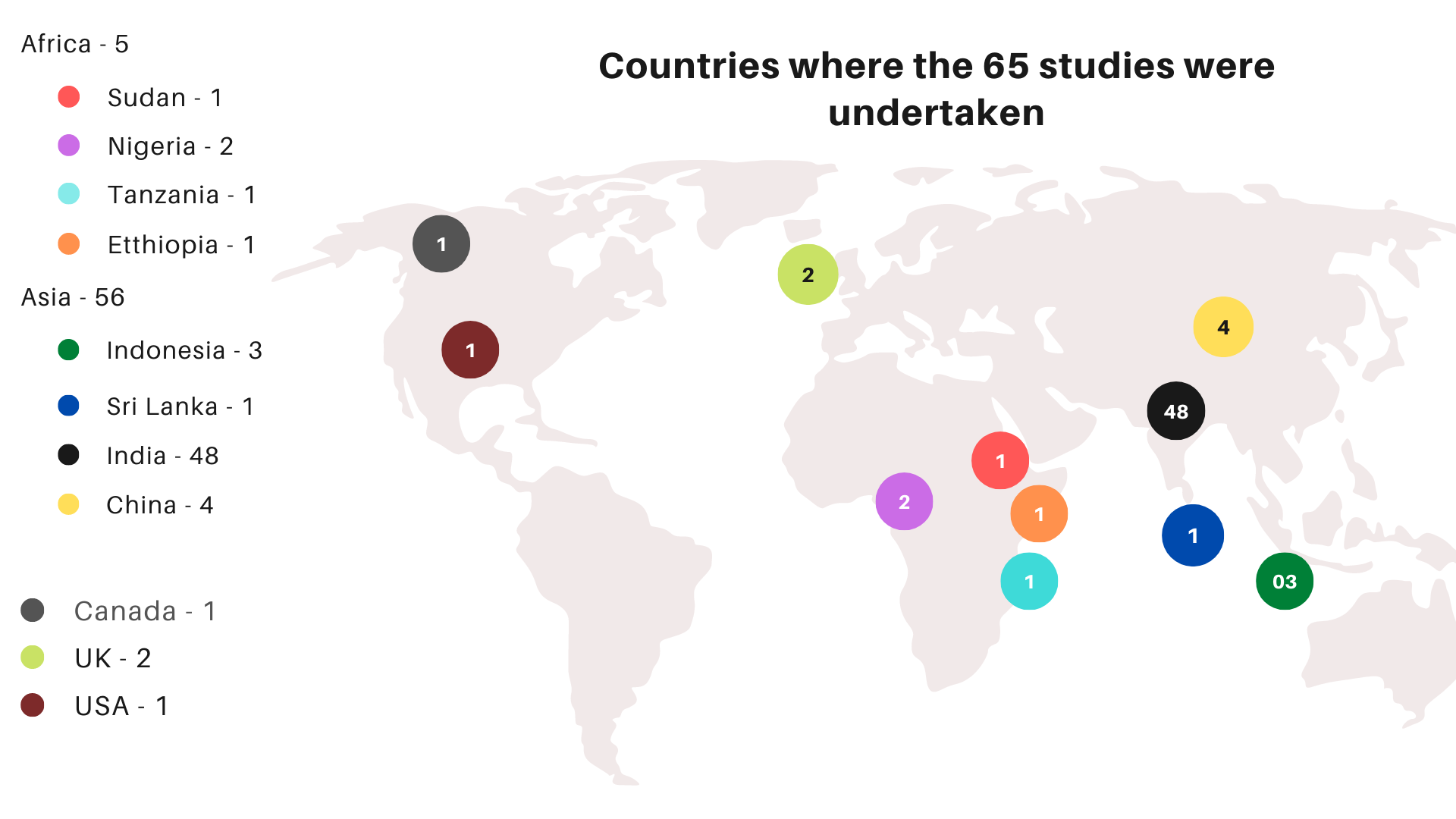
Download media release
Read the Journal Article
 The Study
The Study
The largest ever systematic review of studies published in scientific journals that were conducted on millets and their impact on diabetes.
This included:
-
-
- 80 studies on humans from 11 countries of which 65 were eligible for both meta-analysis and regression analysis, and included about 1,000 people studied
- Diabetic, pre-diabetic and non-diabetic individuals
- 11 types of millets, with various processing.
-

 Results
Results
Millets were shown to reduce the risk of developing type 2 diabetes and helped manage type 2 diabetes
Impact on diabetes
Consumption of millets had the following impacts:
-
- For diabetic individuals: blood glucose levels were lowered by 12% and 15% for fasting and post-meal respectively. Individuals’ blood glucose level went from diabetic to pre-diabetic level
- For diabetic individuals: HbA1c (blood glucose bound to hemoglobin) was lowered by an overall average of 15% d
- For pre-diabetic individuals: HbA1c was lowered up to 17% and individuals’ HbA1c level went from prediabetic to normal status
Note: based on long-term studies, 7 days to 2 years; the majority being 3-4 months duration
Glycemic Index (GI)
All cooking methods raised the GI level millets, however:
-
- The mean GI of millets across all cooking methods is low: 52.7 ± 10.3
- 36% lower than milled rice and wheat (refined and whole grain)
- 14-37 % lower GI than maize
- Millets boiled in water: have a low GI; lower than rice or maize
- Millets cooked with other ingredients added have a medium GI; lower than wheat and rice
Note: Low GI is <55; Medium GI is 55-69
Download media release
Read the Journal Article
 Policy Recommendations
Policy Recommendations
Design policies and incentives to diversify staples with millets
The Smart Food initiative advocates an approach to diversify staples with millets by driving consumer demand for millets and supporting the development of value chains for millets from farm to fork.
To achieve this, policy could provide support for:
-
- awareness campaigns about millets
- low-GI products made with millets
- a level playing field for millets or incentives to grow and eat millets
- biofortified millets, that includes GI levels
- sustainable millet production based on agroecology principles.
Incorporate millets into meals designed for diabetics or people with a high risk of being diabetic
The study supports the use of millets for managing and reducing the risk of diabetes. Understanding the effect of different forms of cooking and processing of millets on their GI will be important.
 Research Priorities
Research Priorities
One major diabetes study covering all types of millets and processing and using consistent testing methodologies
A large number of studies on millets and diabetes have been conducted by a wide range of research organizations with different millets, forms of cooking and testing methods. More individual studies will always be helpful on the prevention and management of type 2 diabetes. However, the greatest value would be one major study covering:
- all the types of millets and range of varieties
- all major main forms of cooking/processing
- using whole grain and different levels of refinement
- using consistent testing methodologies.
Studies on other types of millets that have not yet been widely studied
The types of millets most in need of further detailed studies are:
- Proso millet, which was not included in any of the GI studies but included in fasting and post-meal blood glucose level studies
- Little millet, which showed a wide variation in the results of different studies
- Browntop and guinea millet were not included in any studies.
Developing a better understanding of the impacts of poverty on diabetes and vice versa
This should be understood in urban and rural areas and through a multi-dimensional poverty lens.
Developing better understanding on diversification of staples and impacts on the UN Sustainable Development Goals (SDGs)
No single solution will solve a complex problem like diabetes. Also, all solutions should be designed understanding their wider impacts within the complex system they are part of. Food system solutions that ensure a positive ‘smart food triple bottom line’ of being good for you, planet and farmer, will be important. Diversification of staples will impact all these areas and needs to be understood holistically to make informed decisions.
Download media release
Read the Journal Article
 Authors
Authors

Dr S Anitha
Senior Nutrition Scientist, ICRISAT

Ms Joanna Kane-Potaka
Assistant Director General, ICRISAT,
Executive Director of the Smart Food

Dr Takuji W Tsusaka,
Kobe University, Japan

Dr Rosemary Botha
Monitoring, Evaluation and Learning Lead,One Acre Fund
Former Research Analyst, International Food Policy Research Institute (IFPRI )

Dr Ananthan Rajendran,
Scientist, National Institute of Nutrition (NIN)

Professor Ian Givens
Director at University of Reading’s Institute of Food, Nutrition and Health (IFNH)

Dr Devraj J. Parasannanavar,
Scientist, National Institute of Nutrition (NIN)

Professor Kowsalya Subramaniam
Registrar, Avinashilingam Institute for Home Science and Higher Education for Women (deemed to be university)

Prasad Durga Veera Kanaka

Dr Vetriventhan Mani
Senior Scientist (Genetic Resources), ICRISAT

Dr Raj Bhandari
Medical doctor,
Rep. on the Indian National Technical Board of Nutrition
 Contacts
Contacts
Rohit Pillandi, Senior Communication Officer, ICRISAT
+91 9949513812
Dr S Anitha, Senior Scientist, Nutrition, ICRISAT, India
Joanna Kane Potaka, ADG – External Relations; Executive Director, Smart Food
 Nutrition study series
Nutrition study series
This study is part of a series that has been worked on for the last four years under the Smart Food initiative and will be progressively released in 2021, including systematic reviews on the impacts of millets on
-
- Diabetes
- Iron deficiency anemia
- Managing lipid profile (cholesterol, obesity, hypertension and cardiovascular disease)
- Calcium deficiencies and requirements
As part of this, ICRISAT and the Institute for Food Nutrition and Health at the University of Reading have formed a strategic partnership to research and promote the Smart Food vision that our diets become healthier, more sustainable on the environment and good for those who produce it.
1 International Crops Research Institute for the Semi-Arid Tropics (ICRISAT), India
2 Kobe University, Japan
3 International Food Policy Research Institute (IFPRI), Malawi
4 National Institute of Nutrition (NIN), India
5 Institute of Food, Nutrition and Health, University of Reading, United Kingdom
6 Avinashilingam Institute for Home Science and Higher Education for Women, India
7 National Technical Board of Nutrition, Government of India (GoI), India.
Download media release
Read the Journal Article
Number of Views

























